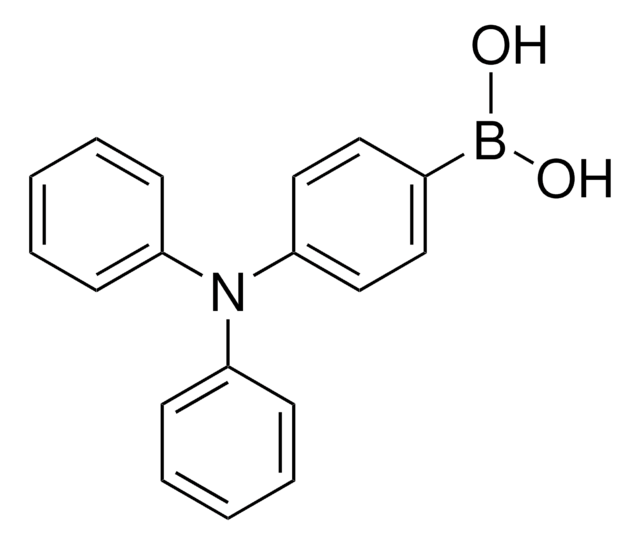929476
N-Acetyl-S-(2-amino-9-(4-fluorobenzyl)-6-oxo-6,9-dihydro-1H-purin-8-yl)-L-cysteine
≥95%
Synonym(s):
p-Fluorobenzylguanine ligand, AUTAC ligand, FBnG
Sign Into View Organizational & Contract Pricing
All Photos(1)
About This Item
Empirical Formula (Hill Notation):
C17H17FN6O4S
CAS Number:
Molecular Weight:
420.42
MDL number:
UNSPSC Code:
12352209
NACRES:
NA.21
Recommended Products
Quality Level
Assay
≥95%
form
powder or chunks
reaction suitability
reagent type: ligand
storage temp.
2-8°C
SMILES string
O=C1NC(N)=NC2=C1N=C(SC[C@@H](C(O)=O)NC(C)=O)N2CC3=CC=C(C=C3)F
Application
N-acetyl-S-(2-amino-9-(4-fluorobenzyl)-6-oxo-6,9-dihydro-1H-purin-8-yl)-L-cysteine is a p-fluorobenzylguanine (FBnG) based ligand used to initiate selective autophagy as a strategy for targeted protein degradation and PROTAC (proteolysis-targeting chimeras) technology.
Related Technology Spotlight: Degrader Building Blocks for Targeted Protein Degradation
Browse our growing synthesis and research tools: Protein Degrader Building Blocks
Related Technology Spotlight: Degrader Building Blocks for Targeted Protein Degradation
Browse our growing synthesis and research tools: Protein Degrader Building Blocks
Other Notes
AUTACs: Cargo-Specific Degraders Using Selective Autophagy
Iterative Design and Optimization of Initially Inactive Proteolysis Targeting Chimeras (PROTACs) Identify VZ185 as a Potent, Fast, and Selective von Hippel-Lindau (VHL) Based Dual Degrader Probe of BRD9 and BRD7
BAF complex vulnerabilities in cancer demonstrated via structure-based PROTAC design
Cereblon versus VHL: Hijacking E3 ligases against each other using PROTACs
Systematic exploration of different E3 ubiquitin ligases: an approach towards potent and selective CDK6 degraders
Iterative Design and Optimization of Initially Inactive Proteolysis Targeting Chimeras (PROTACs) Identify VZ185 as a Potent, Fast, and Selective von Hippel-Lindau (VHL) Based Dual Degrader Probe of BRD9 and BRD7
BAF complex vulnerabilities in cancer demonstrated via structure-based PROTAC design
Cereblon versus VHL: Hijacking E3 ligases against each other using PROTACs
Systematic exploration of different E3 ubiquitin ligases: an approach towards potent and selective CDK6 degraders
Legal Information
PROTAC is a registered trademark of Arvinas Operations, Inc., and is used under license
related product
Product No.
Description
Pricing
Storage Class Code
11 - Combustible Solids
WGK
WGK 3
Flash Point(F)
Not applicable
Flash Point(C)
Not applicable
Certificates of Analysis (COA)
Search for Certificates of Analysis (COA) by entering the products Lot/Batch Number. Lot and Batch Numbers can be found on a product’s label following the words ‘Lot’ or ‘Batch’.
Already Own This Product?
Find documentation for the products that you have recently purchased in the Document Library.
William Farnaby et al.
Nature chemical biology, 15(7), 672-680 (2019-06-11)
Targeting subunits of BAF/PBAF chromatin remodeling complexes has been proposed as an approach to exploit cancer vulnerabilities. Here, we develop proteolysis targeting chimera (PROTAC) degraders of the BAF ATPase subunits SMARCA2 and SMARCA4 using a bromodomain ligand and recruitment of
Miriam Girardini et al.
Bioorganic & medicinal chemistry, 27(12), 2466-2479 (2019-03-04)
The von Hippel-Lindau (VHL) and cereblon (CRBN) proteins are substrate recognition subunits of two ubiquitously expressed and biologically important Cullin RING E3 ubiquitin ligase complexes. VHL and CRBN are also the two most popular E3 ligases being recruited by bifunctional
Christian Steinebach et al.
Chemical science, 11(13), 3474-3486 (2020-11-03)
Cyclin-dependent kinase 6 (CDK6) is an important regulator of the cell cycle. Together with CDK4, it phosphorylates and inactivates retinoblastoma (Rb) protein. In tumour cells, CDK6 is frequently upregulated and CDK4/6 kinase inhibitors like palbociclib possess high activity in breast
Vittoria Zoppi et al.
Journal of medicinal chemistry, 62(2), 699-726 (2018-12-13)
Developing PROTACs to redirect the ubiquitination activity of E3 ligases and potently degrade a target protein within cells can be a lengthy and unpredictable process, and it remains unclear whether any combination of E3 and target might be productive for
Daiki Takahashi et al.
Molecular cell, 76(5), 797-810 (2019-10-14)
Protein silencing represents an essential tool in biomedical research. Targeted protein degradation (TPD) strategies exemplified by PROTACs are rapidly emerging as modalities in drug discovery. However, the scope of current TPD techniques is limited because many intracellular materials are not
Our team of scientists has experience in all areas of research including Life Science, Material Science, Chemical Synthesis, Chromatography, Analytical and many others.
Contact Technical Service








